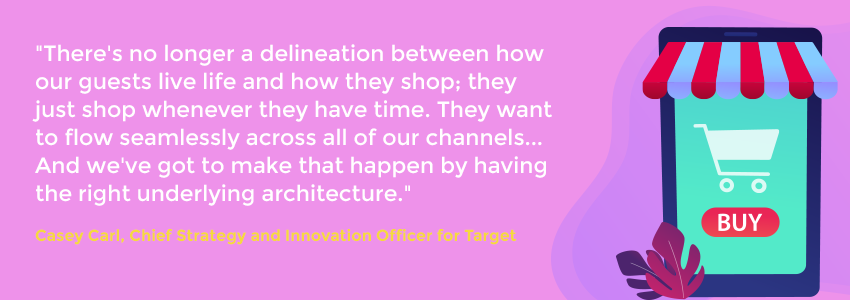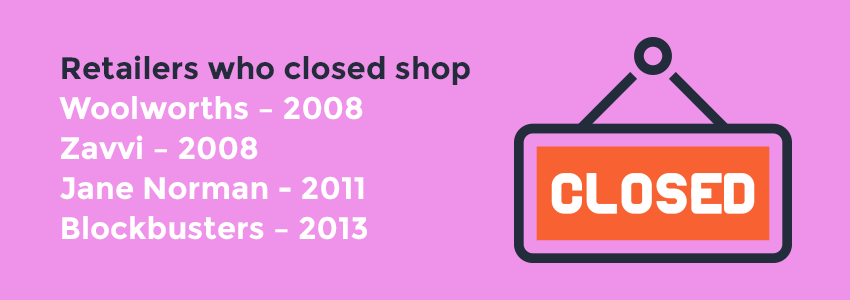For some retailers’ the mobile phone has been revolutionary and helped drive them forward and dramatically grow, whilst other retailers’ who have not embraced the mobile phone, have ultimately had to close their doors.
Fighting on behalf of the mobile phone, as you all know we love them, it is not their fault, they are just an innocent bystander in this scenario, the fault lies with the retailers themselves.
Before we look at how the smartphones have revolutionised consumers shopping experience, we must first look back at how consumers shopped before the introduction of the mobile phone to really see the true value of the mobile phone.
Looking for ideas
Back in the late 90s for anyone who wanted to look for ideas of clothing or gifts, they would either have had to physically go into stores. The only other way was to pick up a catalogue and flick through the pages. Websites were around in the late 90s and early 2000s, but only the very big retailers would have had one and browsing these sites would have been slow and tedious.
Making the purchase
Again, the only two ways to purchase something from a retailer would have been through a catalogue or visiting the retailers store. Two very long and slow processes, especially if you did not live near a large town.
What happens now
With the popularity of mobile devices and the fact consumers can look for ideas stood in the middle of a field, hundreds of miles away from a shop, see something they like and purchase it right then and there, there is no need to ever go into a store.
For those who do visit the store, the vast majority will find what they want to buy, then go onto their mobile phones and see if they can find it cheaper online.
7 out of 10 mobile users interact with their devices in the store while they are shopping (Source: Google Mobile Movement Study)
This means brick and mortar stores are not only battling with other physical stores, but against millions of online retailers.
What has happened to some of the big retailers?
Some huge retailers have shut shop over the past 10 years or so, and whilst we aren’t saying that they all went under because they ignored the popularity of mobile phones, we would almost guarantee had they embraced it and seen how consumers were using it to do their shopping, their doors may still be open today.
From the above list of retailers who closed down in recent years, Jane Norman is a prime example of a retailer who took no notice of their target audience and this shut shop in 2011.
Jane Norman were a huge, they built their brand on selling clothes to 16 to 25-year-olds and peaked in the 90s. Back in the 90s mobile phones were not readily available so there was no need to offer a mobile solution, but when they closed shop in 2011, smartphones were being widely used and just a year after they closed in 2012, 66% of their target audience 16 to 24-year-olds owned a smartphone (Source: Statista).
So, their decision to ignore the popularity of mobile phones may well have been the final nail in their coffin.
What your business can do to embrace the mobile phone
To ensure that you are not the next Zavvi or Jane Norman, below are some easy wins to help you offer customers a mobile experience that matches, and in some cases even beats the in store experience.
Mobile friendly website
Number 1 on your list is to ensure your mobile website works seamlessly and consumers can browse it, look for ideas, and make a purchase just as easy as coming into your store or using a desktop computer.
From 2011 to 2018 M-commerce retail sales have increased by 762% from £ 910 Million to £7.84 Billion (Source: Statista)
With the huge increase in mobile sales for retailers, not offering consumers a mobile friendly website or if your mobile site is slow, can dramatically hurt sales. In fact a one second delay in mobile load times can impact mobile conversions by up to 20% (Source: Google/Ipsos).
For some great tips on how you can speed up your website and get more sales read our blog here.
Multiple communication channels
Offer consumers as many ways as possible for them to be able to get in contact with you, whether it is for customer support or they just want to ask a question. But what you must do, is make it easy for them to find them, offering 10 ways for them to contact you is great, but if consumers are struggling to find these then it is a wasted resource.
Apart from the obvious two of a phone number and email address, there are 2 other ways that you can utilise the consumers mobile phone.
Keyword – Use a Keyword that can be displayed on your website, in store, or on flyers/posters, and allow customers to it to get in contact with you.
“Text ORDER followed by your receipt number to 88802 to get an update on your delivery”
Virtual Mobile Number –-Similar to a Keyword, you can use a Virtual Mobile Number to allow customers to message you.
“If you have any questions about products, our website, delivery, or anything else, text us on 447123456789 and someone will be in touch”
Integration between online and in store
Like Casey Carl said; “They (consumers) want to flow seamlessly across all of our channels”. Consumers want to shop online and in store and have the same amazing experience. But to achieve this you need to look at both your online and physical store.
Show availability information – Number one on the list is to ensure that both your online and physical store match up.
75% of consumers expect retailers to have product availability information before visiting in store (Source: Capgemini)
You do not want your website showing that you have items in store and when your customers come in they find out it is not there. This will infuriate them, and potential mean you have lost that customer.
Think about what you do well online – Can you replicate what you do well on your website that you can do in your store? Maybe consumers love the fact that they can easily speak with someone through your website, so ensuring that your staff are just as friendly and knowledgeable is key.
You need to remember that buying both online or in store should provide the same amazing experience that will make customers come back for more.
The journey doesn’t stop when they have purchased
Just because someone has purchased from you doesn’t mean the communication should stop. Now is the perfect time to go the extra mile and drive home your amazing customer service and turn them from a one-time purchase into a customer for life.
There are 3 simple ways you can keep in contact with consumers after they have bought from you.
Delivery notifications – Make sure you send delivery notifications and updates, providing customers each time an option to update their delivery date and time.
Survey – Send a survey to customers and ask a couple of key questions about how they found your website, service, and product which will help you understand your strengths and weaknesses.
Follow up message – 6 to 10 weeks after your customer made their purchase, send them a message either offering them a discount, some suggestions of what other products you have, or even just a friendly hello to remind them you are still there.
Consumer shopping habits will constantly change and evolve and ensuring that you keep up with the new trends and technology can be tough. But using SMS as part of your marketing, sales, and even support can be a very simple but very effective communication method.


